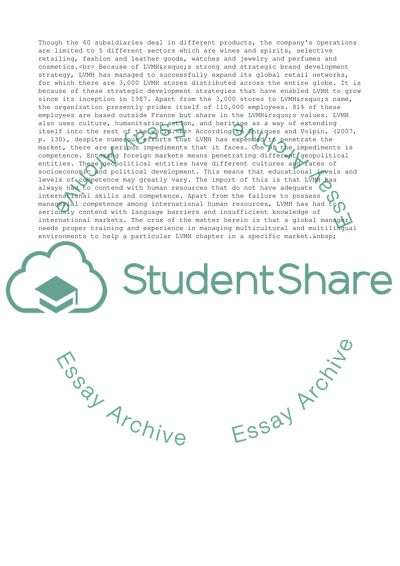Cite this document
(Cross-cultural Management at Moet Hennessy - Louis Vuitton Case Study, n.d.)
Cross-cultural Management at Moet Hennessy - Louis Vuitton Case Study. Retrieved from https://studentshare.org/management/1644383-cross-cultural-management-lvmh-career-development-through-international-mobility
Cross-cultural Management at Moet Hennessy - Louis Vuitton Case Study. Retrieved from https://studentshare.org/management/1644383-cross-cultural-management-lvmh-career-development-through-international-mobility
(Cross-Cultural Management at Moet Hennessy - Louis Vuitton Case Study)
Cross-Cultural Management at Moet Hennessy - Louis Vuitton Case Study. https://studentshare.org/management/1644383-cross-cultural-management-lvmh-career-development-through-international-mobility.
Cross-Cultural Management at Moet Hennessy - Louis Vuitton Case Study. https://studentshare.org/management/1644383-cross-cultural-management-lvmh-career-development-through-international-mobility.
“Cross-Cultural Management at Moet Hennessy - Louis Vuitton Case Study”, n.d. https://studentshare.org/management/1644383-cross-cultural-management-lvmh-career-development-through-international-mobility.


